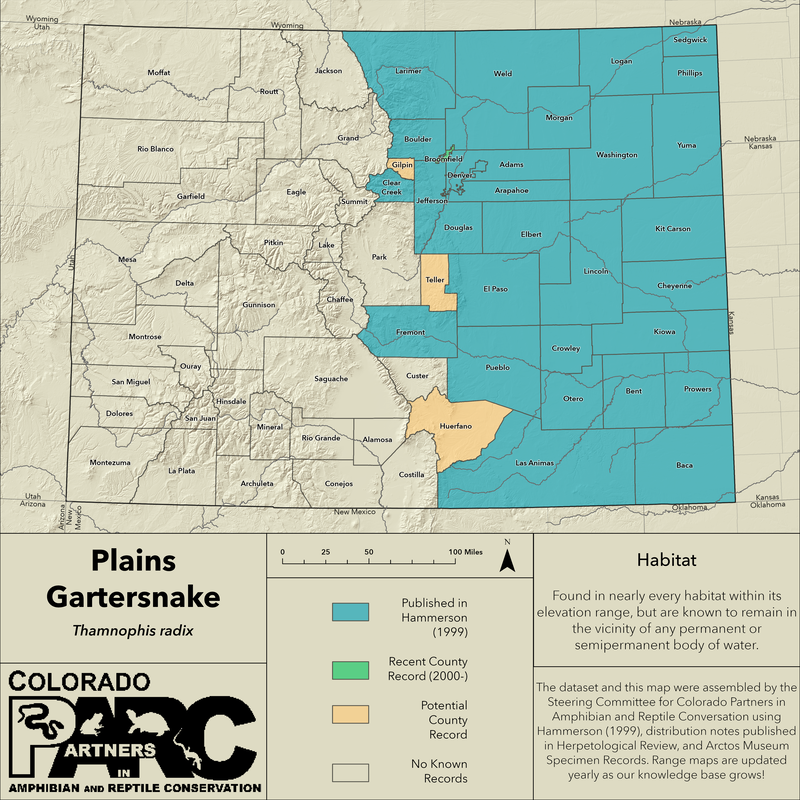|
Identification:
Distribution: Plains Gartersnakes occur throughout most of the Great Plains region of Colorado at elevations primarily below 6,000 feet, though some outliers have been known to occur. (Hammerson 1999)
Activity: Activity occurs from as early as mid-March to as late as October or November. Plains Gartersnakes are cathemeral, as its activity will vary based on temperature and moisture. Brumation usually begins in December and lasts until February. (Hammerson 1999)
Conservation Status: Designated as a non-game species in Colorado. Plains Gartersnakes still remain locally abundant, as its populations are more resistant to natural and human pressures.
NatureServe rank: G5 (Globally Secure), S5 (State Secure). |
Habitat: Plains Gartersnakes can be found in nearly every habitat within its elevation range, but are known to remain in the vicinity of any permanent or semipermanent body of water. (Hammerson 1999)
Diet: Plains Gartersnakes are generalistic, meaning that their diet can change based on the circumstances. They are known to eat invertebrates, amphibians (and their larvae), reptiles, mammals, and other animals. (Hammerson 1999)
Defense: Defenses from predation include striking, repeated biting, and secretions from the cloacal sacs which are designed to make the snake less appealing. (Hammerson 1999)
Natural Predators: In Colorado, known predators of this species include snakes, American Bullfrogs, raptors, and other birds. (Hammerson 1999)
|
Cited & Additional Resources
Hammerson G. A. 1999. Amphibians and Reptiles in Colorado. University Press Colorado, Boulder.
Hammerson G. A. 1999. Amphibians and Reptiles in Colorado. University Press Colorado, Boulder.
Account compiled by: Hayden Lewis
Reviewed by:
Last Updated: 1/24/2023 by Anthony Berardi
Reviewed by:
Last Updated: 1/24/2023 by Anthony Berardi


